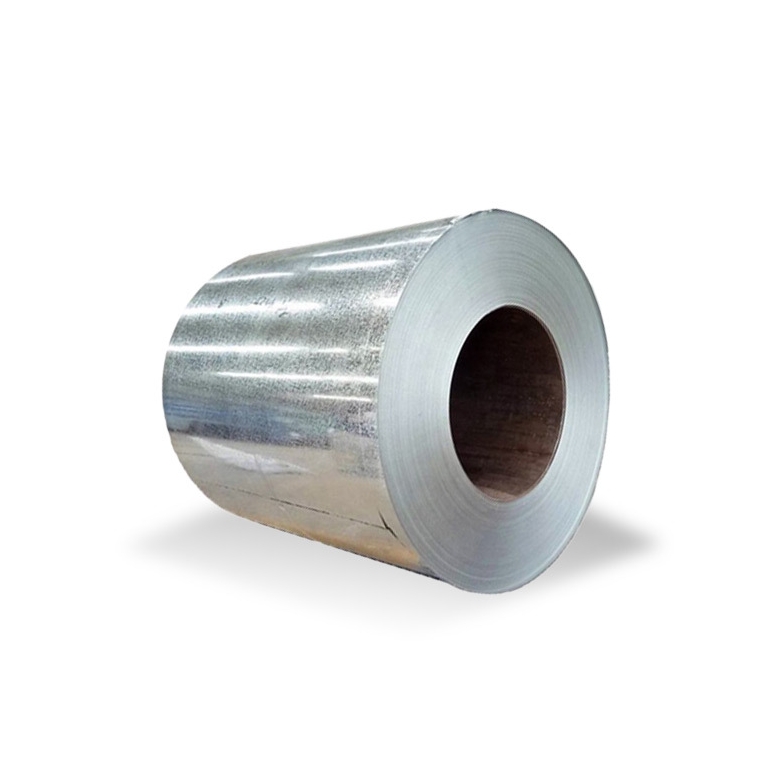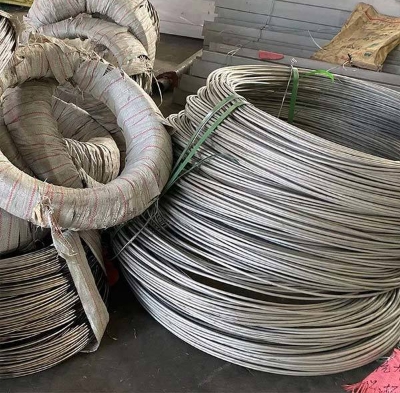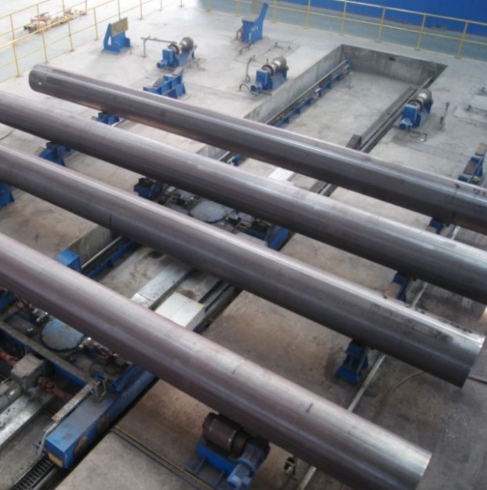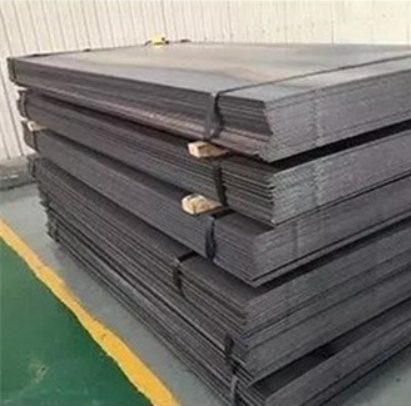We see DX52D / SGCD1 galvanized sheet trading in 2025 at broadly lower-to-moderate levels versus 2024 peaks: typical FOB China ranges near USD 550–620 / tonne, India list-price pockets near USD 700–770 / tonne, and U.S. domestic offers and mill spot for hot-dipped galvanized (HDG) coils averaging USD 980–1,150 / tonne depending on coating (Z), thickness and volume. These ranges reflect falling zinc support, stable HRC fundamentals, and stronger export flow from Asia.
What DX52D and SGCD1 mean
DX52D is a commercial grade designation used in the EN 10346 family for continuously hot-dip coated low-carbon steels. It identifies a cold-rolled base steel with specific tensile/yield ranges that is subsequently hot-dip galvanized (or galvannealed) in a continuous coating line.
SGCD1 is the Japanese JIS/industrial shorthand for a hot-dip galvanized commercial low carbon sheet (used commonly in Asian supply chains). The two labels describe roughly equivalent coated products intended for forming and general coated steel applications — roofing, cladding, appliances, ductwork and light structural parts.
Both names describe coated coil/sheet rather than a single alloy — the coating mass (Z100, Z180, Z275, etc.), thickness and surface finish are the variables that drive pricing and fitness for purpose.
Applicable standards and technical references
The European standard EN 10346 defines continuous hot-dip coated steel strip for cold forming and sets the DXxx designations. JIS standards and various national specs (e.g., SGCC, SGCD) define similar requirements for galvanized coil in Asia.
When you create a purchase order, reference the applicable standard (eg. EN 10346:DX52D+Z275 or JIS G3302 / SGCD1 Z180) and call out the following: base steel code, coating mass (g/m² or Z number), surface finish (regular spangle, small spangle, matte), thickness tolerance, and post-coating testing (adhesion, salt spray if required).
Typical chemical and mechanical properties
DX52D and SGCD1 are low-carbon cold-rolled steels. Typical buyer expectations:
-
Carbon equivalent / weldability: Low C, designed for good pressforming and welding.
-
Yield / tensile: Specified ranges in EN/JIS — commercial coated coils often have yield points around 200–300 MPa and tensile strength in the 270–420 MPa band depending on temper and grade.
-
Thicknesses: Common from 0.25 mm up to 2.0 mm for sheets; coils for roll forming are typically 0.3–1.2 mm.
-
Surface: Bare (silver GI), pre-painted (PPGI), or chromated for paint adhesion.
Always request the mill test certificate (MTC) and mechanical test reports when quality matters.
Coating systems & zinc mass — why they matter for price
Coating mass is the single biggest technical variable that changes price. Common notations:
-
Z100 / Z120 — light coating for indoor or short-life outdoor uses.
-
Z180 / Z200 — moderate corrosion protection, common for general construction.
-
Z275 — heavy coat, used where extra corrosion resistance is required (roofing in corrosive environments).
Zinc mass is usually specified as g/m² (both sides combined or per side depending on spec). Heavier coatings use more zinc and therefore add raw-material cost directly; as zinc is traded separately, galvanized sheet price tracks zinc moves closely.

How the product is made
Continuous hot-dip galvanizing is the dominant production route for DX52D/SGCD1: cleaned cold-rolled coil → pickling → flux → continuous dip in molten zinc bath → air knives/roller control → quench and coil. Prepainted versions (PPGI/PPGL) are produced by applying a paint system to the galvanized base.
Processing choices (bath temperature, alloy additions in the zinc, line speed, and pre-treatment chemistry) affect surface appearance and adhesion; these are the technical knobs that mills use to meet different end-use specs.
2025 market drivers that determine price
In 2025 the price for coated sheet is driven by a mix of raw materials, production and logistics factors:
-
Zinc price: Zinc is the coating metal. When LME zinc moves, the coated steel cost base shifts because mills pass through zinc surcharge or integrate it into list prices. Recent LME dynamics (inventory draws and trader movements) created volatility but overall zinc was softer vs some 2024 peaks — this helped pressure coated-steel prices downwards.
-
Hot-rolled coil (HRC) price: CRC/HR inputs set the steel base. HRC contracts or FOB China indices heavily influence domestic mill offers. When HRC falls, galvanised price typically follows after a short lag.
-
Export flows and port freight: Asia exports more coated sheet when domestic demand softens; freight and port congestion add a variable premium for FOB or CIF deliveries.
-
Trade policy & anti-dumping: Duties or anti-dumping investigations in major markets (US/EU) can create price differentials and push buyers to local procurement.
-
Seasonality & construction demand: Roofing and building seasonality still affects spot coil orders.
2025 price summary & global comparison
Below is a practical, indicative comparison of common market price bands in August 2025. These are market indicative numbers (USD per metric tonne FOB or ex-mill where noted). Prices vary with thickness, Z coating, spangle, order size and port.
| Region / Channel | Typical 2025 price band (USD / tonne) | Notes / typical references |
|---|---|---|
| China FOB (major ports) | USD 550 – 620 / t | FOB prices from Chinese mills and trading platforms for DX51/52/53 range; PPGI premiums higher. |
| India (ex-mill / list) | USD 700 – 770 / t | Indian list prices and trade intelligence show GP/PPGI list increases and regional premiums. |
| U.S. domestic (mill/spot) | USD 980 – 1,150 / t | U.S. spot offers and domestic HDG indexes show higher landed domestic levels due to freight and anti-dumping spreads. |
| Europe (FOB NWE / mill) | USD 900 – 1,050 / t | European offers are typically above China FOB once freight, duties and compliance are included (variable). |
| Small parcel / retail (coil slitting, small qty) | USD 1,200+ / t | Small orders or cut-to-length add handling costs; expect retail premiums. |
How to read the table. Use the lower end for light coating (Z100), basic spangle and large contract volumes. Use the upper end for heavy zinc (Z275), small MOQs, or prepainted product.
Market note: spot and mill indexes move daily. The bands above combine several industry sources and trade offers and are intended to help procurement planning rather than be a price guarantee.
How to specify DX52D / SGCD1 for procurement
When you place an enquiry or PO, standardize your specification to eliminate price ambiguity:
-
Steel grade & standard: e.g., EN 10346: DX52D + Z275 or JIS G3302: SGCD1 Z180.
-
Thickness & tolerance: state exact thickness and tolerances (e.g., 0.7 ± 0.03 mm).
-
Coating mass: Z value or g/m² (per side or total).
-
Surface finish: regular spangle, small spangle, matte, chromated, oiled.
-
Tempering/skinpass: if forming/paint requirements exist.
-
Testing & certification: MTC EN 10204-3.1 (or equivalent), coating adhesion, salt spray if required.
-
Packaging & transport: coil ID, inner/outer diameter, packing for export.
-
Delivery term: FOB / CIF / EXW / DDP and port.
-
MOQ & sample request: specify acceptable minimum and sample conditions.
Clear specs reduce commercial friction, speed quotations and lower the hidden premium caused by ambiguous orders.
Quality control & tests buyers should require
Ask for and verify these:
-
Mill Test Certificate (MTC) (chemical & mechanical).
-
Coating mass test (g/m²), adhesion & coating thickness mapping.
-
Salt spray test (ASTM B117 or equivalent) if long outdoor life is required.
-
Surface inspection reports (appearance, spangle, blemishes).
-
Dimensional certificates (thickness & width checks).
-
Third-party inspection (SGS/Intertek) for critical contracts.
A short factory audit checklist (packing, line control, traceability) pays off on bigger projects.
Lead time, packaging, MOQ and logistics
-
Lead times: standard coil orders from Chinese mills: 7–28 days depending on inventory; custom tempering or prepainted lines add 10–30 days. Large projects with paint or unusual specs: 4–8 weeks.
-
MOQ: industrial coil MOQs often 3–25 tonnes; thicker coils or painted coils may have higher MOQs. Small cut-length orders have higher per-tonne costs.
-
Packaging: export coils are strapped, protected by waterproof paper and steel pallet where required. For PPGI, separate inner paper and blocking to avoid contact damage.
-
Freight considerations: full-container loads (FCL) reduce per-ton freight; LCL and breakbulk add handling and time.
Luokaiwei maintains stock for common DX52D/SGCD1 sizes to shorten lead times on urgent orders.
Applications and lifecycle expectations
Common applications:
-
Roofing, cladding and gutters.
-
Automotive inner panels and structural parts (where specified).
-
Appliance bodies and HVAC ducts.
-
Light structural and general manufacturing components.
Lifecycle depends on coating mass, environment and maintenance. Z275 in rural/urban environments delivers many years of service; coastal or industrial exposures require heavier coatings or additional coatings/paint systems.
Why source from Luokaiwei
We are a Chinese manufacturer and exporter with strengths that matter to procurement teams:
-
Factory pricing: direct mill/supply channel reduces intermediaries, giving buyers better FOB/EXW economics — what we call a 100% factory price advantage in our direct offers.
-
Customization: we offer tailored zinc mass, pre-paint systems, slit widths and small production runs for pilot orders.
-
Stock & fast delivery: we hold common DX52D/SGCD1 coil inventory for fast shipments; selected items ship within one week.
-
Quality controls: full MTCs, coating tests, plus third-party inspection on request.
-
Export experience: seasoned in global packing, container loading and export documentation to minimize delays and claims.
If you need a formal quotation, specify the standard (EN or JIS), thickness, coating mass and CIF/FOB port — we will price competitively and transparently.
Price negotiation tactics & lowering landed cost
-
Buy larger volumes / FCLs to dilute freight and handling charges.
-
Standardize specs to mill common runs (avoid bespoke tempering).
-
Accept a range of mill brands (give suppliers flexibility to source the best mill offer).
-
Negotiate zinc-surcharge formula or fix a short-term contract to hedge volatility.
-
Consider simple post-processing in destination country (e.g., painting) if local labor/freight economics allow.
A well-written long-form PO with performance acceptance criteria reduces post-delivery disputes that increase cost.
Environmental, health & regulatory considerations
-
Zinc supply & recycled content: zinc is a traded commodity; secondary zinc sources and recycling influence supply. Regulatory issues around certain additives in galvanizing baths (e.g. lead) vary by region.
-
Worker safety: galvanizing fumes during welding and high-temperature processes require local controls.
-
End-of-life recyclability: galvanized steel is recyclable; coatings separate during steel remelting. This supports circular economy reporting.
-
Trade compliance: ensure correct HS codes and declarations to avoid duty surprises.
FAQs
Q1: How much does coating weight (Z value) add to price?
A1: Expect roughly a direct material uplift proportional to the zinc mass. Heavier coatings (e.g., Z275 vs Z100) use significantly more zinc and therefore add raw-material cost; mills will price accordingly and may show it as a zinc surcharge or integrated price.
Q2: Is DX52D better than DX51D for forming?
A2: DX52D generally indicates slightly higher strength/temper level than DX51D; choice depends on forming demand — specify formability needs and ask for yield/tensile numbers.
Q3: Should I buy PPGI (prepainted) or plain galvanized and paint locally?
A3: PPGI adds factory paint quality and warranty but raises unit price and minimum quantities. If you need narrow color tolerance and factory warranty, buy PPGI. For very large structures with on-site painting, plain galvanized may be cheaper.
Q4: How do zinc price moves affect my contract?
A4: Many suppliers include a zinc-surcharge clause tied to a published index (e.g., LME Zn). Negotiate a cap or a short-term fixed price if you need certainty.
Q5: What documents should I insist on before shipment?
A5: MTC (EN 10204 3.1), coating mass report, packing list, commercial invoice, and (optionally) third-party inspection certificate (SGS/Intertek).







